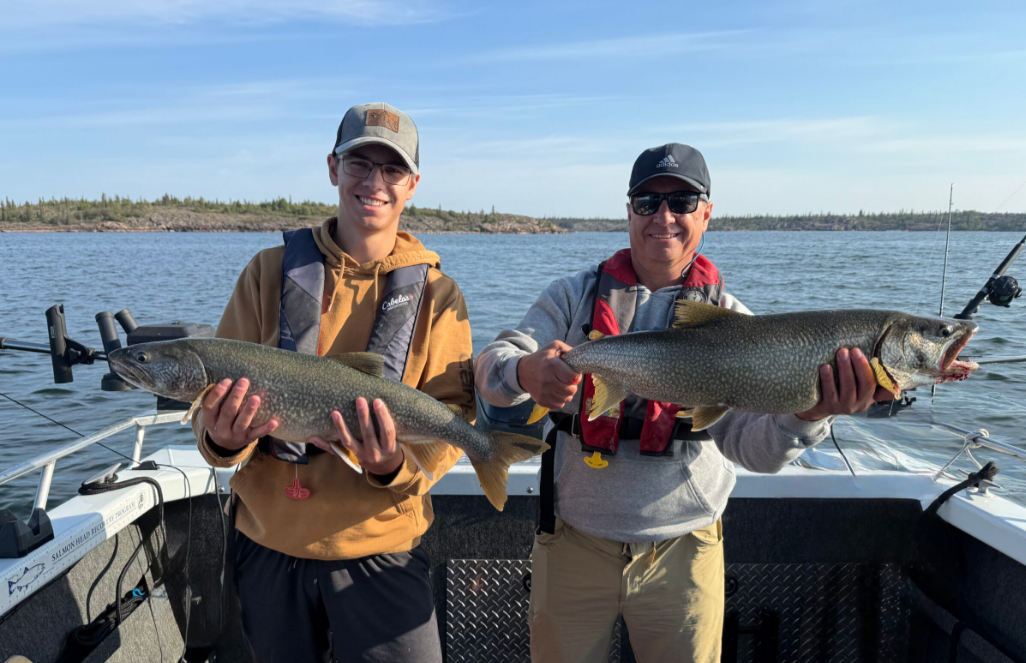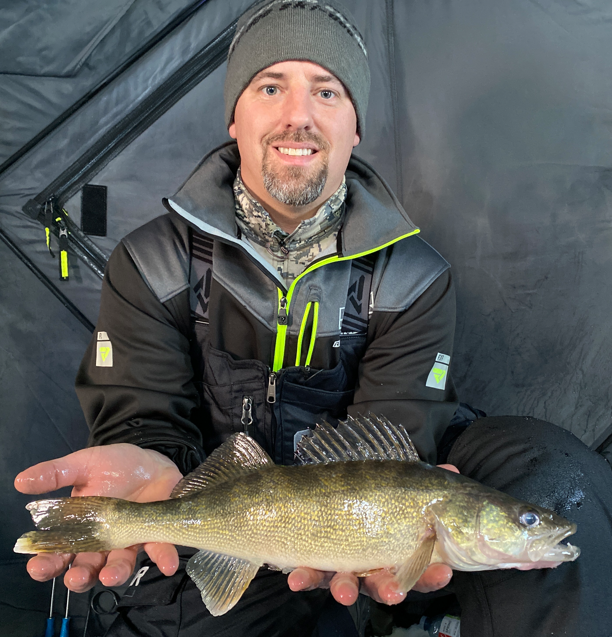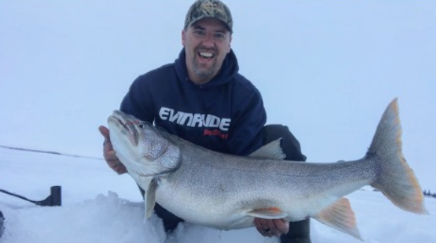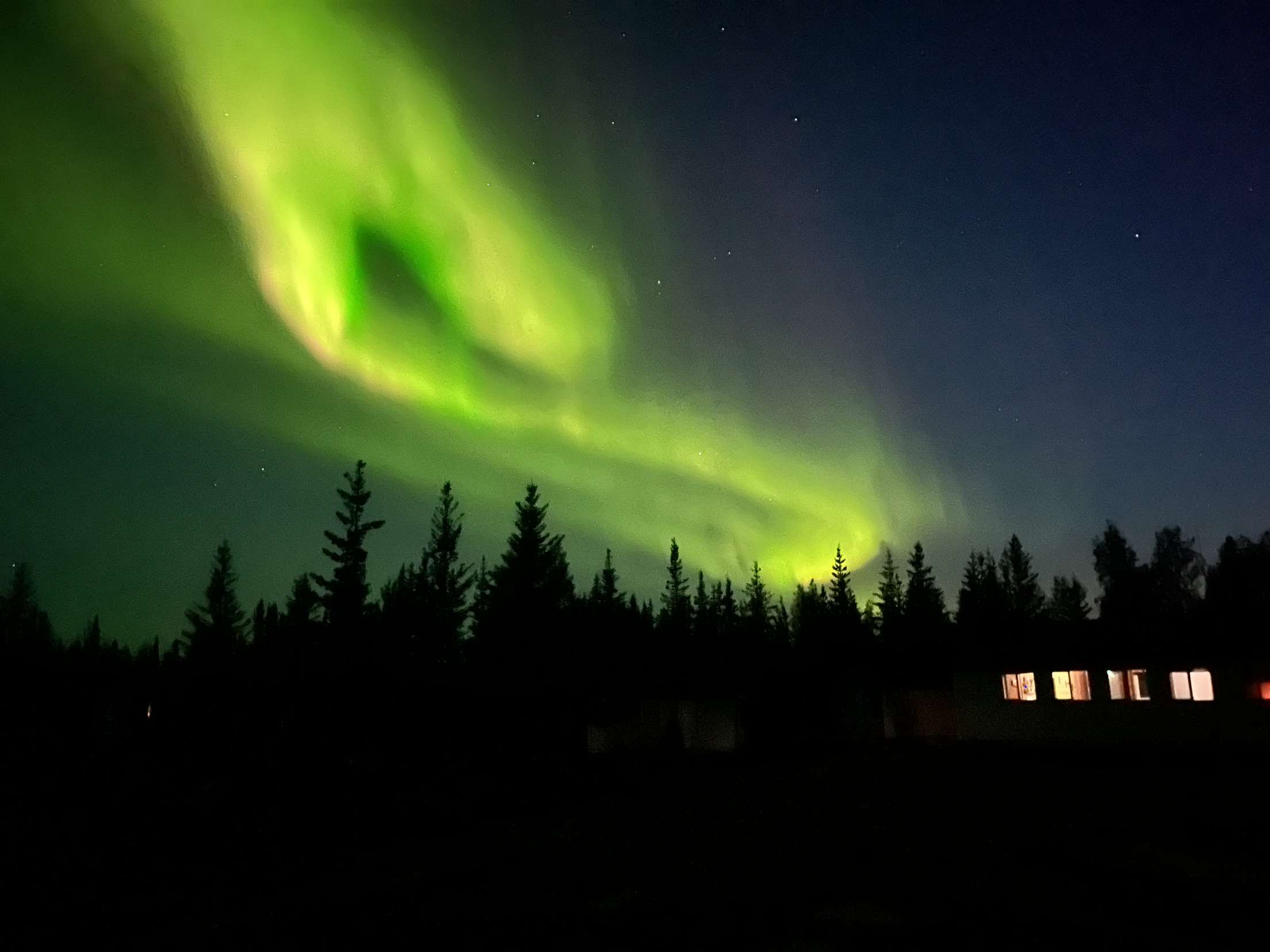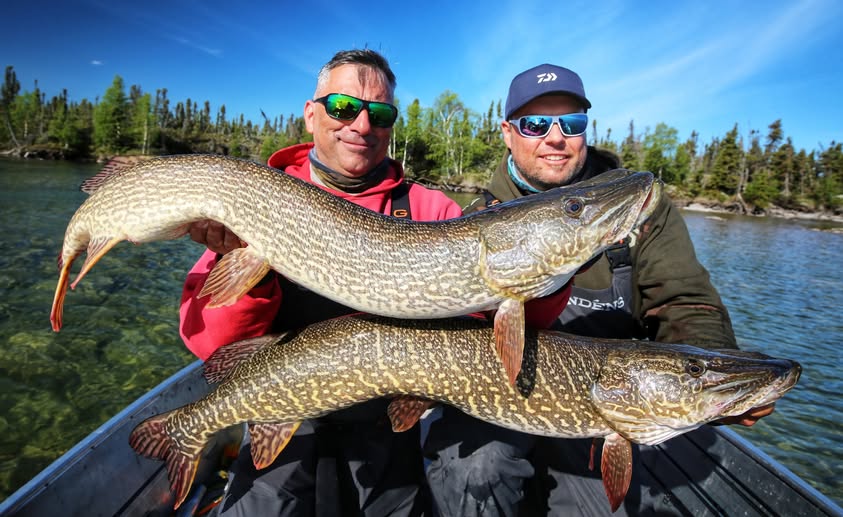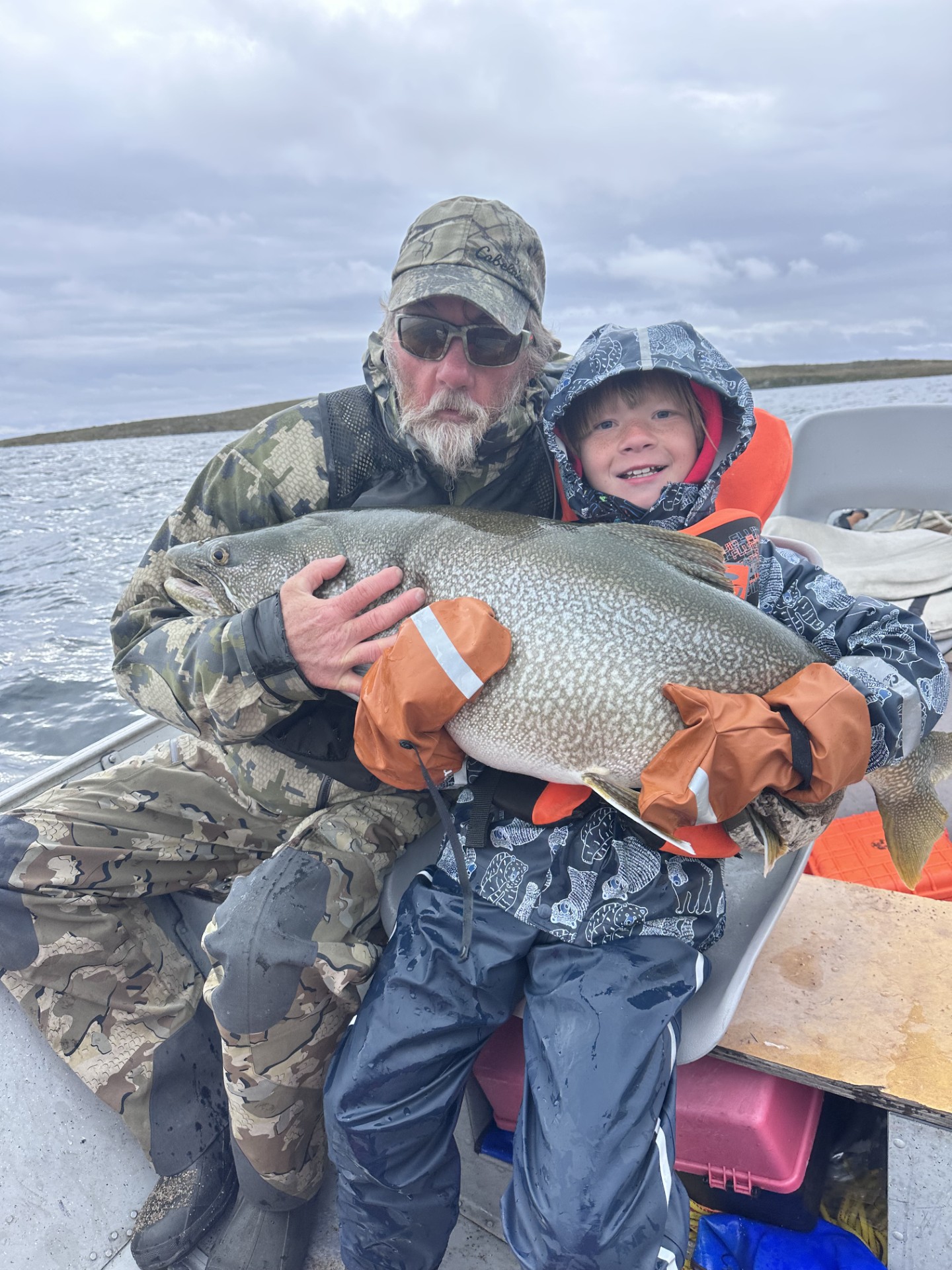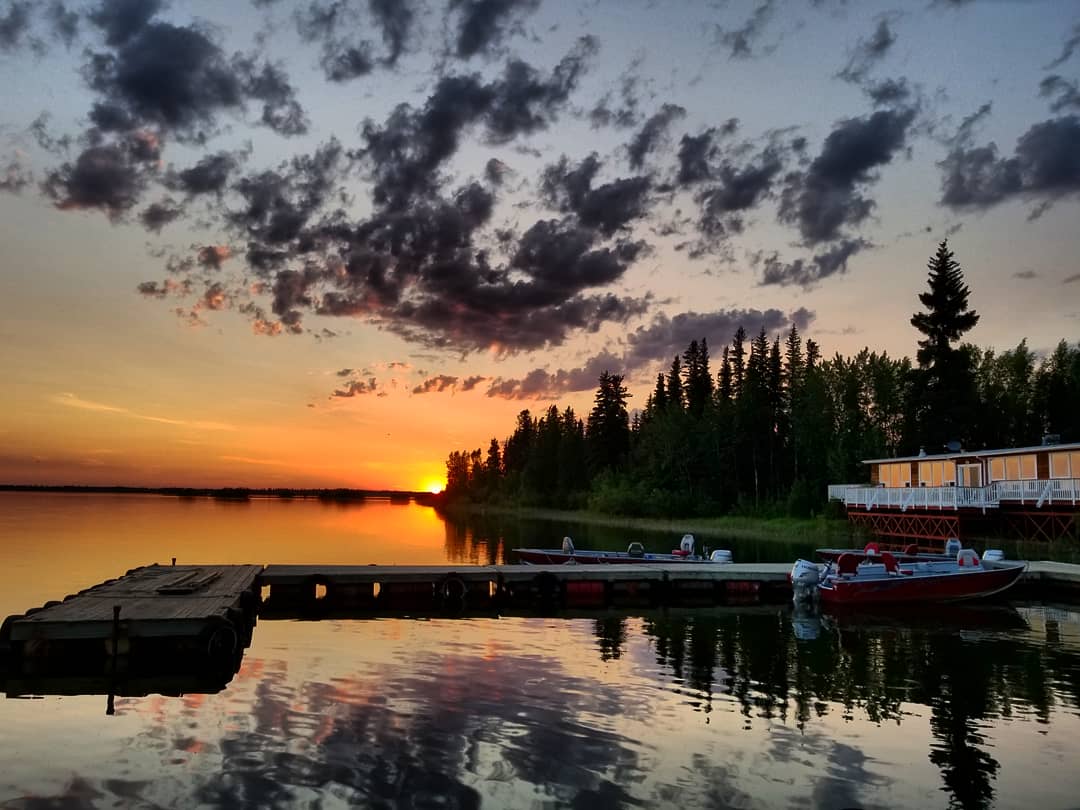Then, there are those all-important flies: there are several types of flies, including dry flies, nymphs, and streamers. Each one is unique and possesses a memorable name.
The “Parachute Adams” is a dry fly that’s used throughout the world. Looking a bit like a fuzzy mosquito, it’s designed to float on the water to imitate insects that fish love. It also provides a “parachute” to make the fly easy to see on the water.
Then, there’s the “Wooly Bugger” fly, called the bread and butter of flies because it’s so versatile and works for char and pike.
Other useful flies include the “Furry Bunny,” which lures pike to the surface because of its shape that reminds hungry fish of critters like leeches.
Another handy tip from experienced fly-fishers is to use a net with a rubber mesh pocket. Because these are softer, they don’t strip the protective coat from the fish scales. This is important for the health of the fish. Because catch-and-release is common practice in the NWT, these nets are another way flyfishing stays as unobtrusive as possible in the lives of these spectacular fish. It also has the added benefit of ensuring your catch looks vibrant and healthy when you strike a triumphant pose with it for a photo.
You’ll also need a good pair of scissor clamps to help crush barbs or remove hooks from fish.
Then, consider buying a waterproof pack, vest, sling or belt to hold all this flyfishing gear.











